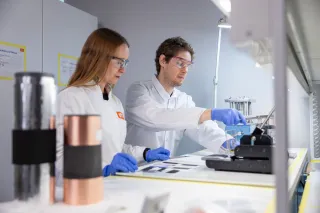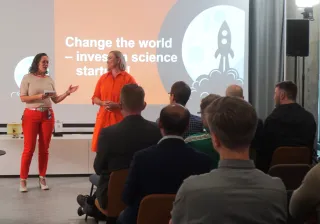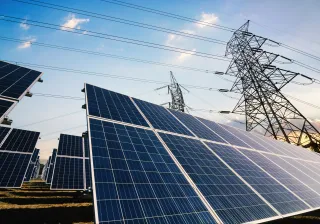The Smart Otaniemi innovation ecosystem has operated for two years and brought together roughly one hundred companies and research organizations to develop smart and sustainable energy solutions. Why is smart energy so important for slowing climate change and enabling sustainable economic growth?
Smart Otaniemi is a smart energy innovation ecosystem in which different organizations co-create sustainable and financially viable energy solutions that help us move towards a carbon-neutral society. The innovation ecosystem is coordinated by VTT and operations are funded by Business Finland alongside the companies and other partners involved. Smart Otaniemi offers a new way of conducting research and development. The challenges are being met in the co-creation projects of the various organizations with an eye on all different perspectives.
“The goal of Smart Otaniemi is to bring together a broad coalition of companies to develop new smart energy solutions and business models that also have global export potential. Simultaneously, we are tackling climate change, for which solutions are desperately needed across the globe. We utilize broad range of skills and knowledge, such as Finnish expertise in energy and telecommunications,” says Tuula Mäkinen, Vice President, Smart Energy and Built Environment.
During two years of operation, the ecosystem’s network has grown to include more than one hundred players, and there are a number of pilot projects underway. The innovation ecosystem’s steering group includes VTT, the City of Espoo, Aalto University and Business Finland, and businesses are also closely involved in directing the ecosystem’s work. The eight pilot projects that were started during the first stage of Smart Otaniemi in 2018 are set to conclude this year. The three pilot projects that were launched in 2019 are making good progress, and the next development projects will soon be starting up.
Developing smart and flexible energy systems
The ongoing energy transition requires a new kind of flexibility and controllability from energy systems and markets. Reaching the emission targets requires both the widespread use of renewable energy and the electrification of various processes, such as transport and industry. At the same time, the role of energy as critical infrastructure is more central than ever. These challenges require new ways of monitoring and controlling energy systems as well as ways of making them more flexible.
What kinds of business opportunities does a flexible energy market open up to ordinary consumers and energy-sector players? Previously, we have looked to find flexibility in production plants and large industrial loads and failed to widely utilize the flexibility opportunities of homes and other buildings. In the future, smaller flexible energy resources can be utilized more effectively: the surplus energy produced by solar panels can be sold on, and the controllability of air source heat pumps and electric vehicle charging can be utilized in balancing markets. The amount of flexible capacity will be a central factor in enabling the use of variable renewable energy. The flexibility of individual consumers can therefore be a contributing factor in building the clean energy system of the future.
The recently developed sub-aggregator model is aimed at easing the use of small, distributed energy resources in a cost-effective way through connecting different interfaces.
Pilot projects developing the energy market
At Smart Otaniemi, the Aggregator Business Models pilot has developed a new sub-aggregator based business model for the flexible energy market. The central concept is that a number of players organically have the opportunity to monitor and control distributed energy resources, such as electric vehicle charging points or buildings’ heating and cooling devices. However, these players are not generally operating in the energy market.
The sub-aggregator model strives to find new solutions in which the flexibility of resources is utilized in a cost-effective way, benefitting everyone connected to the used interfaces. The model has been developed and piloted in the Smart Otaniemi ecosystem.
Meanwhile, the Fleximar project has searched for new business and market models as well as management and control principles that would make it possible to also make use of smaller flexible energy resources in the future.






